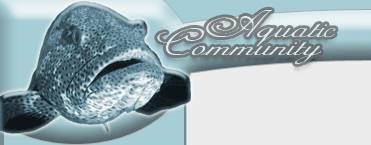Lunare Wrasse
Thalassoma lunare
Common name: Dragon Wrasse, Rockmover Wrasse, Striped Wrasse, Clown Wrasse, Reindeer Wrasse, Red Belly Wrasse
Scientific name: Novaculichthys taeniourus
Max size: 12 in / 30 cm
pH: 8.1-8.4
Salinity: 1.020-1.025
Temperature: 72-78ºF (22-26°C)
The Dragon wrasse is known under many different names, such as Rockmover wrasse, Striped wrasse, Clown wrasse, and Reindeer wrasse. The name Eeindeer wrasse only applies to juvenile fish which are thought to resemble reindeer due to their "horns". It is an odd looking fish that and is relatively common in the trade. If you can not find it in your local store they can likely order a Dragon wrasse for you.
The Dragon wrasse is suitable for more advanced beginners and intermediate marine aquarium keepers. It is not easy to keep but it is not hard to care for either. The most important part of caring for this species is to make sure that it gets enough food. Feed them often.
It is all but impossible to described juvenile dragon wrasses in text and make them justice. I will therefore not even try to make any elaborate description and will instead ask you too look at the pictures. Adult wrasses have a different coloration and shape compared to the juvenile fish. The adults have a white head and a scale patterned body with white and brown/black scales. The tailfin is brown with a white band.
The Dragon wrasse can (like most wrasses) be very shy the first period after being introduced to a new tank. Dragon wrasses sometimes spend the better part of the first week buried in the sand. They always burry themselves to sleep as well.
The Dragon wrasse is very aggressive as an adult. Juvenile specimens are docile but they get more aggressive as they grow older. You should not keep more than one Dragon wrasse in the same aquarium as they are very aggressive towards other specimens of their own species. In the wild they live in pairs and it is sometimes possible to keep an established pair together in the aquarium. Dragon wrasses are quite aggressive towards other species as well. They should only be kept with other aggressive species such as triggers, puffers and groupers.
Dragon wrasses are not reef safe and should not be kept in reef aquariums. The Dragon wrasse will eat any invertebrate and fish that it finds small enough to eat. They will not eat corals but it will knock the corals over and move rocks in their eternal search for food. An adult Dragon wrasse can more or less destroy a marine aquarium in a short period of time.
The Dragon wrasse originates from the Indo-Pacific Ocean where they can be found from the Red Sea to Panama. They can be found as far north as Japan and as far south as Australia.
Dragon wrasse care and aquarium setup:
The Dragon wrasse needs an aquarium of at least 75 gallon / 300 L. You will need a much larger aquarium if you want to keep more than one. The bottom of the aquarium should be covered with at least 3-4 inches / 7-10 centimetres of fine grained sand so that the wrasse can dig itself down into it when it is time to sleep or it feels like hiding. The aquarium should also be decorated with a lot of hiding places in caves and under overhangs. It is good if at least some of the caves are shaded. This fish becomes very elusive if it doesn't feel secure. They prefer a brightly lit aquarium. Good filtration is important and strong currant is preferred. The Dragon wrasse is an excellent jumper and the aquarium needs to be well covered. Keep the water quality high and stable.
Dragon wrasses should never be kept in a reef aquarium but are suitable for "fish only" and "fish only with live rock" setups.
Ideal conditions for Dragon wrasses are pH 8.1-8.4, salinity 1.020-1.025, and temperature 72-78ºF (22-26°C).
Feeding Dragon wrasse
The Dragon wrasse is a carnivore. In the wild they eat different types of invertebrates such as crustaceans, snails, sea and brittle star, mantis shrimps etc. In aquariums they can be fed a variety of different chopped up sea foods, such as crab meat, shrimps and mussels. They can often be trained to accept dried food and flake food. Make sure to provide them with a varied diet. Feed your Dragon wrasse 3-4 times a day.
Breeding Dragon wrasse
We have no information on breeding or sexing the Dragon wrasse. Breeding would require a very large aquarium due to this species aggressive nature toward other Dragon wrasses.
Wrasse Articles:
Bird Wrasse – Gomphosus varius
Dragon Wrasse - Novaculichthys taeniourus
Harliquin Tuskfish – Coerodon fasciatus
Hogfish - Information about Hogfish
Neon Wrasse – Halichoeres melanurus
Ornate Wrasse – Halichoeres ornatissimus
Queen Coris – Coris frerei
Radient Wrasse – Halichoeres iridis
Spanish Hogfish – Bodianus rufus
Striated Wrasse – Pseudocheilinus evanidus
Yellow Coris – Halichoeres chrysus
Line Wrasses:
Fourline Wrasse – Pseudocheilinus tetrataenia
Sixline Wrasse – Pseudocheilinus hexataenia
Eightline Wrasse – Pseudocheilinus octotaenia
Fairy Wrasses:
Exquisite Fairy Wrasse – Cirrhilabrus exquisitus
Lubbock's Fairy Wrasse – Cirrhilabrus lubbocki
Scott's Fairy Wrasse – Cirrhilabrus scottorum
Solar Fairy Wrasse – Cirrhilabrus solorensis
Flasher Wrasses:
Carpenter's Flasher Wrasse – Paracheilinus carpenteri
Dot-and-Dash Flasher Wrasse – Paracheilinus lineopunctatus
Filamented Flasher Wrasse – Paracheilinus filamentosus
McCosker's Flasher Wrasse – Paracheilinus mccoskeri

